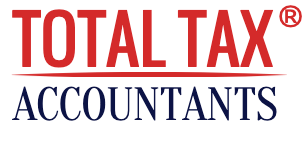New corporation tax rates are coming into effect from April of this year. The initial announcement of the April 2023 Corporation Tax increase was made by the then-Chancellor Rishi Sunak in March 2021. However, Kwasi Kwarteng declared that the policy would be completely abandoned in the “mini budget” he presented on September 23, 2022.
The government was forced to make another U-turn after the mini-budget received a sharply negative market response. PM Truss announced on October 14, 2022, that the corporation tax increase will take place as scheduled. In October 2022, when Sunak got it, his chancellor announced that the initial proposals to raise corporate taxes would be reinstated.
In this guide, we examine how the new Corporation Tax (CT) regime will function and how much more tax small limited companies will be required to pay to start in April 2023.
What are the new Corporation Tax rates?
So just recap where we are currently, 19% is the default rate of corporation tax for any size company, no matter how much profit you’re making. You pay 19% on the lot. The main corporation tax rate will increase from 19% to 25% starting in April 2023.
If your company makes £250,000 in profits, you should pay tax at 25%. That’s the first rule. Then, if your limited company makes profits of £50,000 or less, you use the existing corporation tax rate of 19%. What if you’re somewhere in the middle? What if you’re making £150,000? This thing called marginal relief.
What is “marginal relief” and how does it apply to the two Corporation Tax rates?
Marginal relief basically means that you are not suffering the full 25%; you are getting relief from having to pay 25% when your profits are between the lower limit and this upper limit.
£250,000 @ 25% = £62,500
£50,000 @ 19% = £9,500
The difference in tax is £53,000. (£62,500-£9,500)
“Marginal rate” is 26.5% (£53,000/£200,000)
That means that every pound of profit over £50,000 costs you 26.5p in corporation tax until the profit reaches £250,000.
How to reduce Corporation Tax
The best way to reduce the anxiety is to avoid meeting your accountant a week before your tax return is due. Establish a relationship with your accountant beforehand. Talk to them about your business and your expected income for the next few years. This will help your accountant find the best tax plan for your business.
It’s true that there are some legal ways to reduce your corporation tax obligation, but it can be difficult to know exactly what those ways are and how to use them effectively. Finally, we look at some of the other options available to UK businesses looking to reduce their tax liability and provide guidance on which may be most suitable for your situation.
By expanding allowable expenses, companies can reduce their taxable profits.
Invest in plant & machinery
The “Annual Investment Allowance” (AIA) enables a business to deduct costs up to a certain amount from the qualifying assets. On January 1st, 2019, the AIA was increased to £1 million. Businesses may deduct a sizeable portion of a qualifying investment from their profits.
Claiming business mileage for personal vehicles
Any employee who drives their personal vehicle for business purposes is eligible to claim expenses at the statutory rates per mile.
Up to 10,000 miles per annum @ 45p
Above 10,000 miles at 25p
R&D tax relief
Research and Development tax credits allow companies to claim tax relief for projects considered innovative that improve existing products, processes, or services.
Pension contributions
A pension contribution to the pension scheme is an allowable expense for the company that is made for their employees and directors. This is a direct way to reduce corporate income tax. You should also consider your employee’s personal tax position before making any payments.
Salaries and wages
You can add employees to the payroll and pay them for their services. Make sure the employee’s income does not exceed the tax-free personal allowance.
Of course, getting expert advice on which strategies are right for you should always be a priority, as should understand how they affect your overall tax bill.


